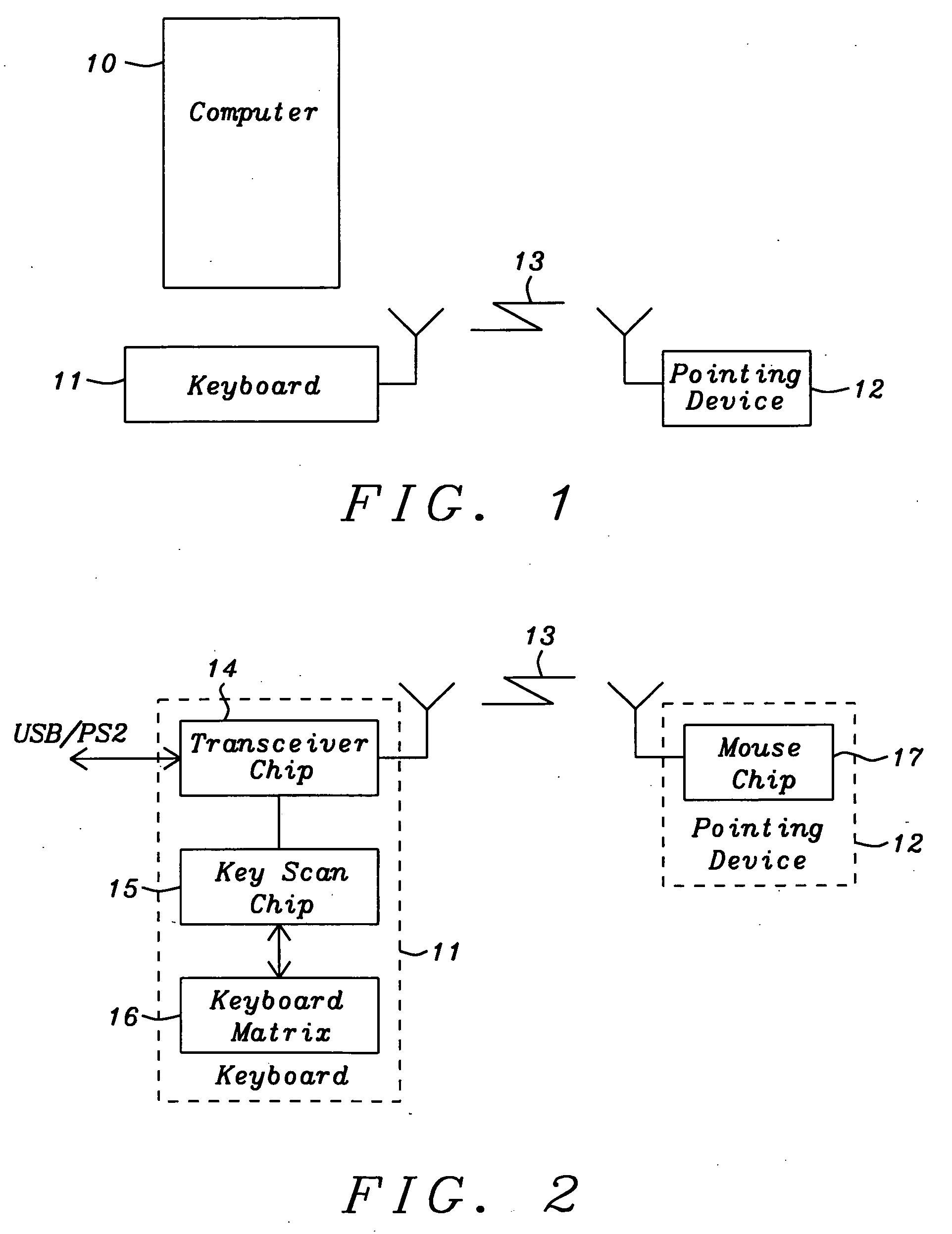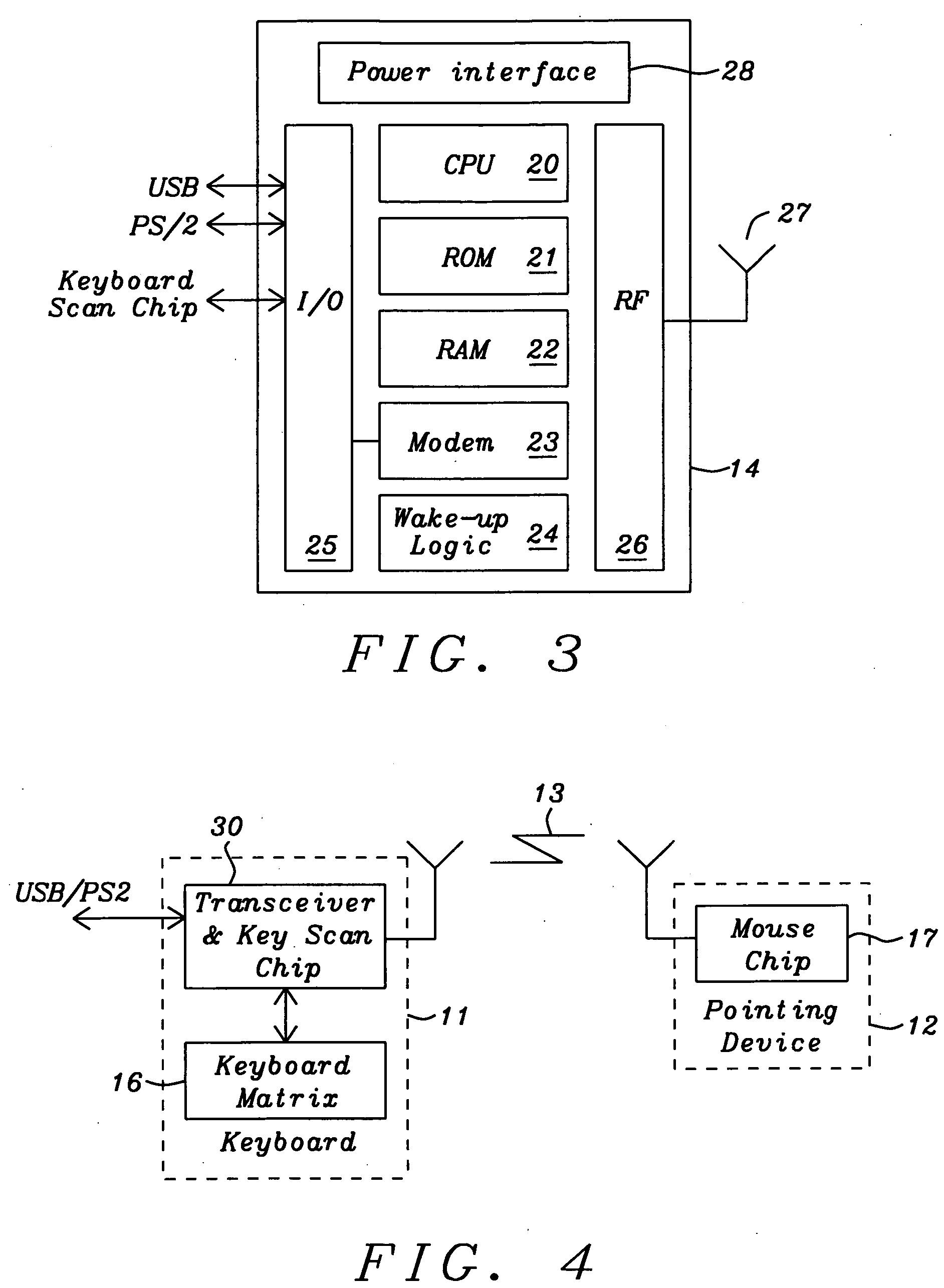Combined keyboard and wireless transceiver
a wireless transceiver and keyboard technology, applied in the field of computer systems, can solve the problems of reducing the useful life reducing the convenience and value of such devices, and reducing the range of wireless input devices, so as to reduce the number of transceivers, reduce the need for rf energy, and reduce the power drain of batteries
- Summary
- Abstract
- Description
- Claims
- Application Information
AI Technical Summary
Benefits of technology
Problems solved by technology
Method used
Image
Examples
first embodiment
[0026]FIG. 2 is a block diagram of the present invention showing the keyboard 11 and the RF coupling 13 of a keyboard transceiver chip 14 to a mouse chip 17 in the pointing device 12. The keyboard transceiver 14 is coupled to a host computer 10 (FIG. 1) by means of an USB or PS / 2 connection. A key scan chip 15 used to detect the press and release of a key on the keyboard matrix 16 couples a signal representing the pressing and releasing of a key to the transceiver chip 14. The transceiver chip 14 sends a signal representing the pressed / released key to the computer 10 by means of the electrical connections. A CPU 20 (FIG.3) processes data from the key scan chip 15, for example to determine key mapping, and a modem 23 (FIG. 3) couples key press and release data to the computer 10 through the USB or PS / 2 ports. When the movement of the pointing device, for example a computer mouse, is detected, or an associated key on the pointing device is pressed, the mouse chip 17 detects the moveme...
second embodiment
[0028]FIG. 4 shows a block diagram of the present invention. The diagram of FIG. 4 is similar to that of FIG.2 with the exception that the keyboard transceiver chip 30 includes the key scan function shown in FIG. 2 as a separate chip. The keyboard matrix 16 is directly coupled to the transceiver and key scan chip 30 where upon the key scan function detects key presses. The code for detected key press and release is coupled from the key scan function 30 to the transceiver function where a CPU 20 (FIG. 5) processes data from the key scan function, for example to determine key mapping, and the transceiver and key scan chip 30 couples to the host computer 10 (FIG. 1) key presses / releases on the keyboard 11 through the modem 23 (FIG. 5) to the USB or PS / 2 ports.
[0029]FIG. 5 is a diagram of second embodiment of the present showing the functions included in the keyboard transceiver and key scan chip 30. The diagram of FIG. 5 is substantially the same as that of FIG. 3 with the inclusion of...
PUM
 Login to View More
Login to View More Abstract
Description
Claims
Application Information
 Login to View More
Login to View More - R&D
- Intellectual Property
- Life Sciences
- Materials
- Tech Scout
- Unparalleled Data Quality
- Higher Quality Content
- 60% Fewer Hallucinations
Browse by: Latest US Patents, China's latest patents, Technical Efficacy Thesaurus, Application Domain, Technology Topic, Popular Technical Reports.
© 2025 PatSnap. All rights reserved.Legal|Privacy policy|Modern Slavery Act Transparency Statement|Sitemap|About US| Contact US: help@patsnap.com



